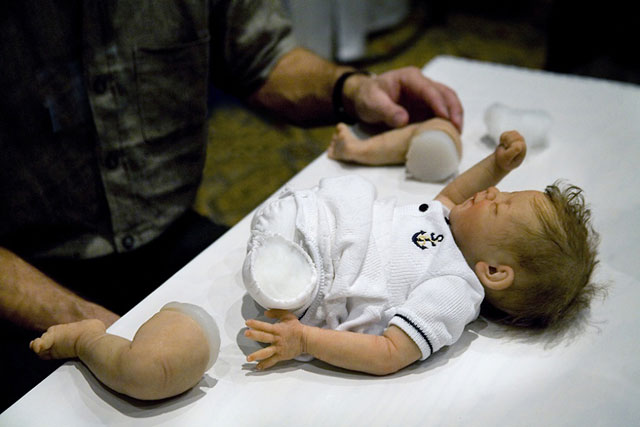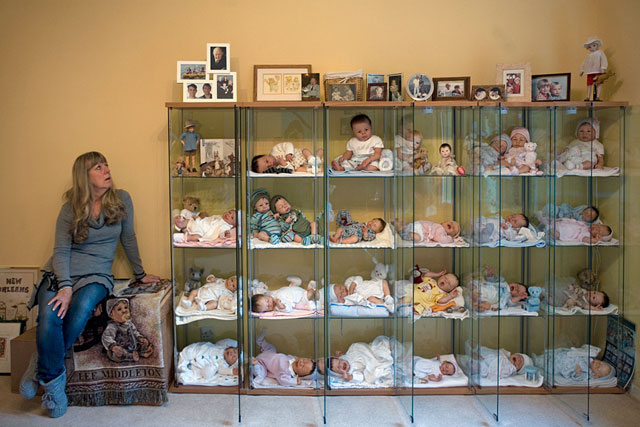Lifelike baby dolls and the people who love them
Photographer Rebecca Martinez photographs reborn dolls and the people who collect/care for them.

Babies create strong emotions for the bearer, holder, and observer. I have discovered this holds true even when it is known the baby is not real.
I am photographing dolls that are created to look and feel like living babies. They are constructed and weighted to feel like infants, which includes a head that must be supported while in one’s arms. They are the most powerful objects I have ever worked with, I am struck by the strong and palpable emotional reactions they produce. They provoke the dominant biological instinct to nurture and the entire spectrum of human behavior.
Some of the collectors care for their reborn dolls as if they were their own children:
Many of the women involved have an especially strong passion for the stage of mothering babies and this is a method to keep this stage permanently in their lives. There is a wide range of personal stories and motivations for being involved in this community. Some create or collect these dolls because they cannot continue to give birth to living babies, or have lost a child, or cannot have one of their own. Some women admire the art form and are doll collectors, others create nurseries in their homes and integrate the babies as part of their families and lives.
Sometimes, women who have lost a newborn have commissioned artists to make a reborn doll that looks exactly like their deceased baby. Modeled after photographs of the real infant, these dolls are called portrait babies.






Stay Connected